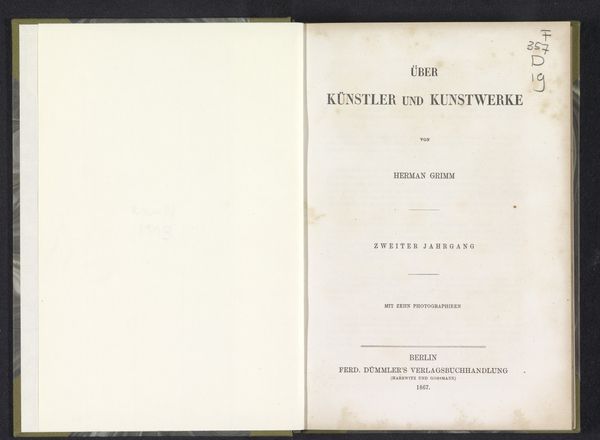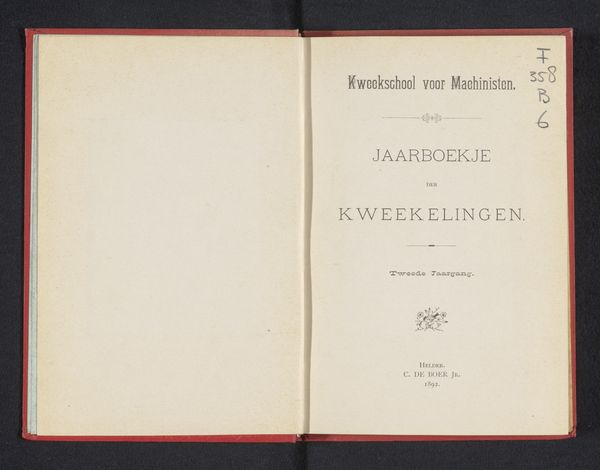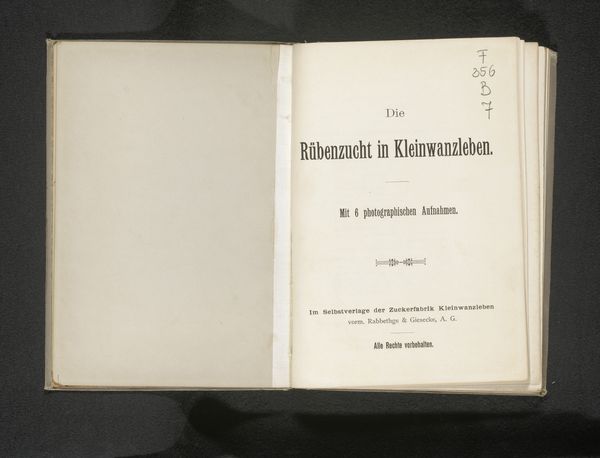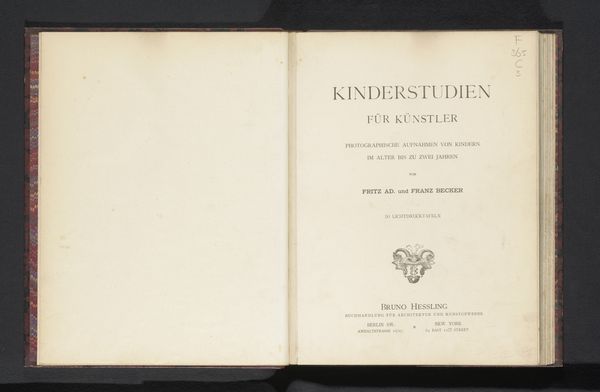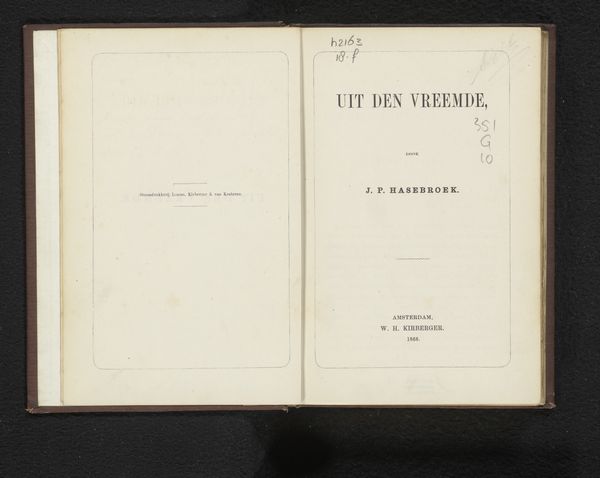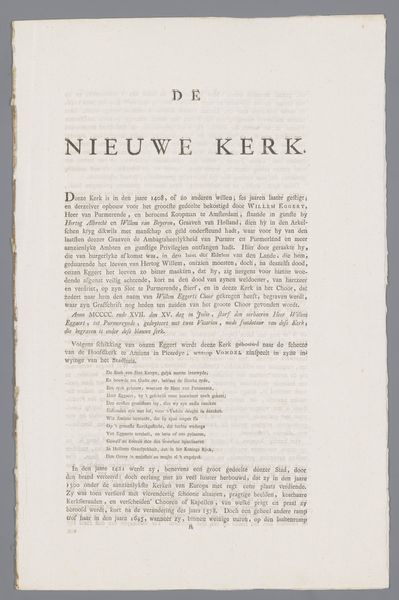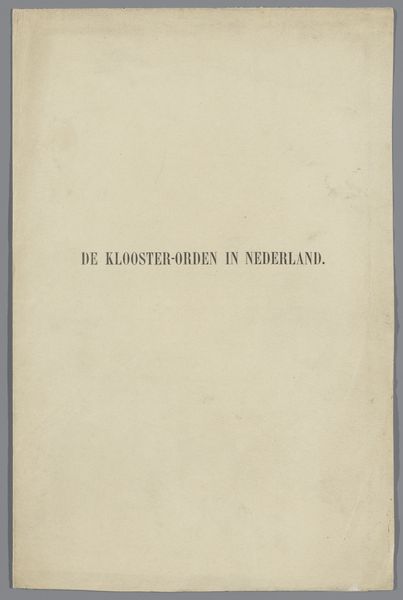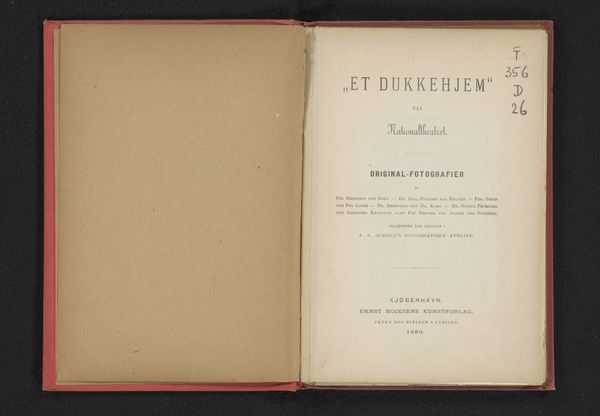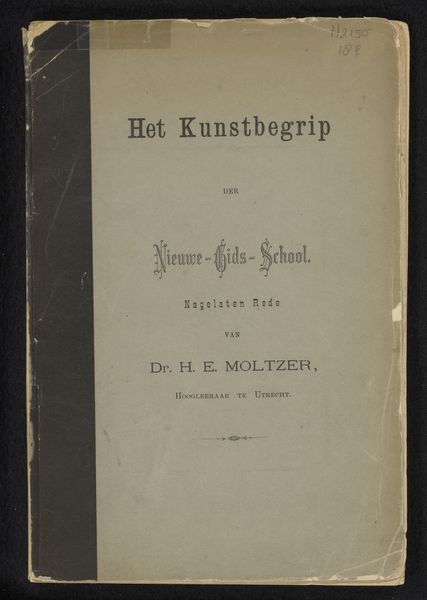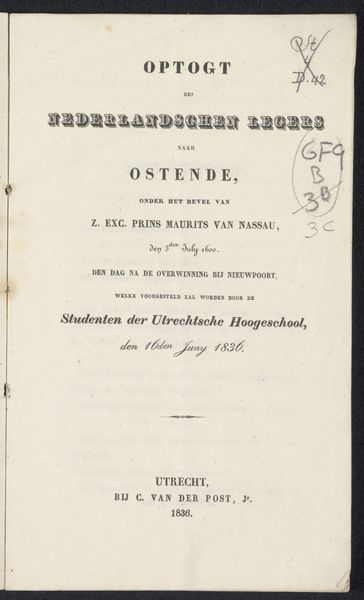
print, textile, paper, typography
# print
#
textile
#
paper
#
typography
#
romanticism
Dimensions: height 22 cm, width 12.8 cm
Copyright: Rijks Museum: Open Domain
Curator: So, here we have "De Kanonneerboot; Vaderlandsche Romance," or "The Gunboat; Patriotic Romance" if you will, created in 1831. It's an interesting example of Romanticism in print. What are your initial thoughts? Editor: Stark! Intimate in a way. I am reminded of a theater program or an invitation... simple and strangely profound, despite its minimalist typography. Almost melancholic, wouldn't you say? Curator: That simplicity is key, I think. It speaks to the function of patriotic works at the time. They needed to be easily disseminated and understood. "The Gunboat" uses typography and the written word to stir feelings of national pride and unity, a common feature in post-Napoleonic Europe. These works often found a home in public spaces like coffee shops and reading rooms, which fostered a sense of collective identity. Editor: So, how might this humble print engage, say, the everyday citizen of 1831? Patriotism is hardly simple… did it carry particular significance back then? Curator: Precisely! Think about the political climate, the recent separation of Belgium from the Netherlands. It wasn't merely about politics; it was about constructing a new collective "us" after turmoil and loss. Pieces like this sought to shape the narrative, evoke that Romantic sense of longing and belonging... idealizing Fatherland while stoking resentments about perceived enemies. The typography and paper itself underscore how "common" the feeling was purported to be, right? Editor: True, a print is accessible. Makes me consider the use of "Romance" in the title. Not love, necessarily, but the grand sweep of national narrative, eh? Also, that title… bold. Curator: Exactly. "Romance" as in "Romanticism," this all-encompassing feeling. The aesthetic aims to elevate patriotic feeling beyond rational politics and law... to make love for one's nation more sensory, instinctive, like feeling rather than judgment. Editor: Hmm… It's strange, how something so outwardly simple becomes such an encapsulation of its era's anxieties. Curator: It serves as a great example of how accessible materials can act as vehicles for constructing very powerful feelings and movements. Editor: A gunboat is so small and unassuming; in that lies its potential power. It's a ghost of big ideas, maybe! Curator: Exactly. A nation-building-project manifest as a ghost on a humble piece of paper.
Comments
No comments
Be the first to comment and join the conversation on the ultimate creative platform.
